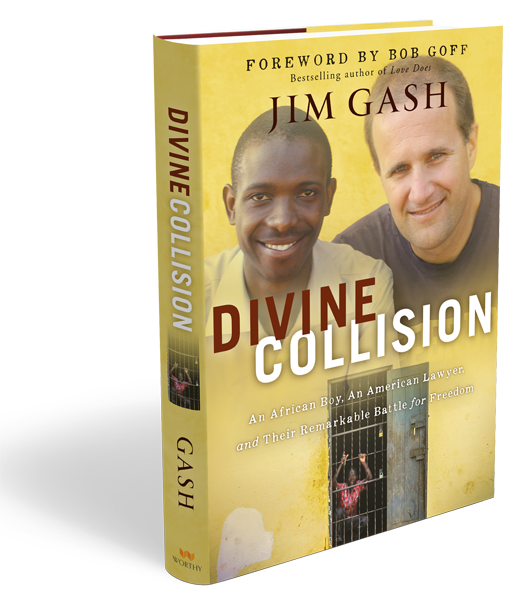Can You See Me Now?
Anticipation hovers like a humid fog enveloping the brand new hotel complex in Mbale Monday morning as twelve Pepperdine students and ten American lawyers prepared to join their counterparts from Uganda Christian University and the Mbale legal bar to work arm in arm on behalf of prisoners “on remand” at the Mbale prison. While these prisoners have been charged with capital crimes (those eligible for the death penalty), none has been convicted of anything, and none has even met with a lawyer since being arrested one to five years ago. I am confident our anxiety is dwarfed by theirs right now.
Two days earlier on Saturday morning, a small team of American criminal lawyers (Alan Jackson, Melissa Mertens, Emily Smith, and I) met with a Ugandan task force developing guidelines that will govern the use of video technology in the courtroom. More specifically, the guidelines set out when video technology can be used to substitute for live appearance in court by defendants for pre-trial hearings, and by witnesses in court cases.

Video Conference Meeting
At the end of the meeting, we simulated such a court appearance via Skype. Alan played the judge, Emily the prosecutor, Melissa the defense lawyer, and, appropriately, I was the defendant accused of stealing a boda boda (motorcycle). “Judge Alan’s” first question, “can you see me now?,” kicked off the simulated hearing. Everyone left the meeting convinced that this time-saving, money-saving, and security-enhancing procedure will soon be implemented to good effect.
The next day (Sunday), we departed the capital city of Kampala mid-morning in two vehicles – a thirty-seated mini-bus, and fourteen-passenger van. In addition to our two drivers, we are accompanied at every step of the way by three armed guards. (Our hotel compound is ringed by ten such guards each evening. Our friends in the Judiciary are taking no chances with our safety). Rather than driving the four hours to Mbale in one straight shot, we stopped at the halfway point in Jinja to eat and see the sights, including the Source of the Nile.
Any discussion about Ugandan geography inevitably begins with the fact that Uganda is home to the largest lake in the world, Lake Victoria, from which the longest river in the world, the Nile, begins its journey north to Egypt. After a decades-long elusive search for the Nile’s source, a British explorer named Speke is credited with “discovering” what Stanley and Livingstone couldn’t find. A monument is erected in honor of Speke. Truth be told, of course, the locals had discovered the Source of the Nile long before the Europeans knew there was such a thing as the Nile.
On the phone the day before, we had been promised a large boat that would comfortably seat our group of twenty-three, which includes Abilene Christian University student Allison Brown, who has been carrying a heavy logistical load since she arrived with her lawyer/father Alan on Friday night. The boat, however, wasn’t quite as warrantied. As our group piled in on top of each other, the distance between the lip of boat and the surface of the water shrunk from feet to inches.
Because I had taken the one-hour boat tour of the area where Lake Victoria spawns the Nile, and because there were only three life jackets for our twenty-three team members, two armed guards, and two boat personnel, I selflessly volunteered to “supervise” the trip from up the hill on the ridge.

I’ll Wait Up Top
I am such a giver.
While they were puttering around the basin, I called ahead and ordered twenty pizzas for our team and five fish for our Ugandan guards at the Adrift Adventures base camp where we headed after the boat road. Adrift is home to the famous (infamous?) “Nile High Bungee” experience where those who have decided that braving the terrifying traffic and malaria-infested flocks of mosquitos falls distressingly short of a sufficient amount of risk to one’s personal health and wellbeing, and wants to supplement this appetite for adrenaline by, for the bargain-basement price of $115, plunging off a rickety platform 150 feet above the Nile. It is reassuring to know that the bungee cord has been replaced since it last broke a couple years back, and the technical staff was extensively trained for many, many minutes before assuming their vital role in this enterprise.
Among our group were five thrill seekers, though truth be told, another ten of us (including yours truly) had previously tasted of these very fruits on a prior visit to Jinja. (I chose not to become a repeat offender). Just before they jumped, each thrill-seeker was instructed to waive for the cameras, as if to say “can you see me now?” to ensure that the moment was captured on film.

Fortunately, the two students and three lawyers who crossed off an item on their bucket list did so without injury or involuntary expelling any bodily fluids. After lunch, we re-boarded and resumed our trek to Mbale.
After checking into our brand-new gated hotel complex, we enjoyed a group dinner with the Ugandan law students, prosecutors, defense lawyers, prison officials, and judicial officers with whom we will be partnering to complete our upcoming prison work.
Everyone is eager to plunge into the interviewing and plea bargaining that will commence on Monday morning. This is our third such prison project in the adult realm, which we began in 2013 after three years of similar work in juvenile prisons known as Remand Homes. We are trying a few new things this time, which we believe will further increase the efficiency of the criminal justice system.
More tomorrow.


Leave a Reply
Want to join the discussion?Feel free to contribute!